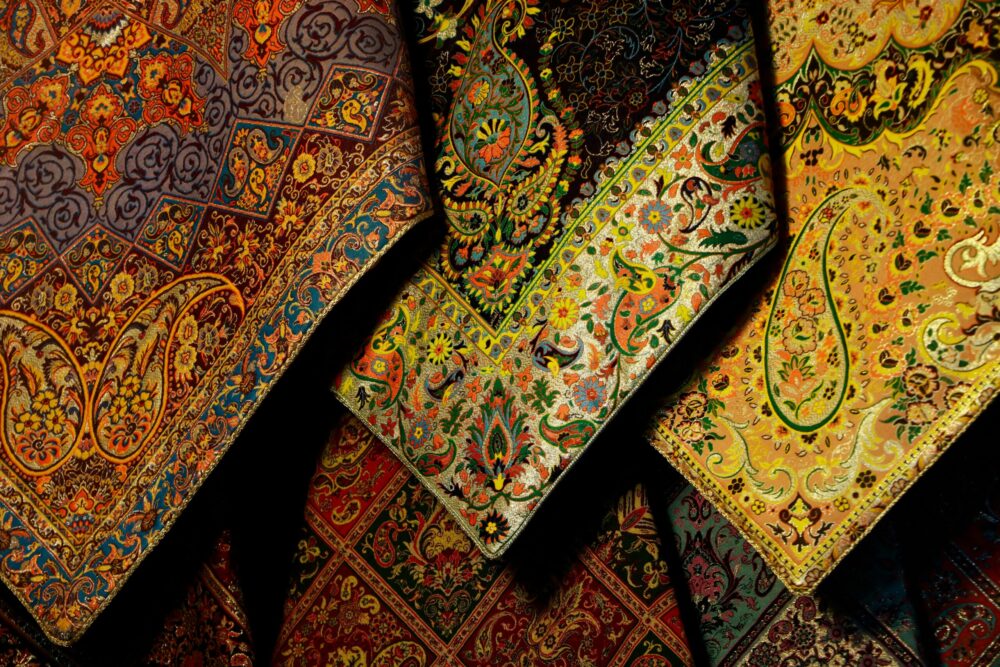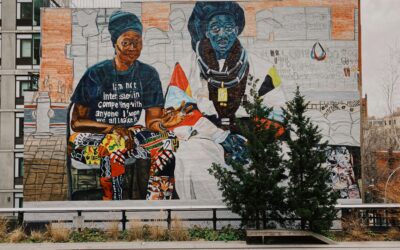Textile art has been an essential part of human civilization for thousands of years, serving as more than just functional clothing or decorative fabric. Across continents and generations, textiles have carried cultural stories, spiritual beliefs, and artistic expression—stitched together by hand, tradition, and identity. From intricate batiks in Indonesia to the vibrant weavings of the Andes, textile art is a living archive of human heritage.
The Origins of Textile Traditions
Textile art is among the oldest forms of creative expression. Ancient civilizations like those in Mesopotamia, Egypt, and the Indus Valley developed sophisticated weaving and dyeing techniques as early as 5000 BCE. These early textiles were not just utilitarian—they signaled social status, spiritual beliefs, and trade connections.
For example, in ancient Egypt, linen garments symbolized purity and were often used in religious rituals and burial practices. In China, silk was not only a luxury fabric but also a cultural ambassador along the Silk Road, carrying Chinese artistry and aesthetics to the world.
Textiles as a Language of Culture
Each thread in a traditional textile tells a story. Patterns, colors, and weaving techniques differ from region to region, making textile art a visual language unique to a culture. In many indigenous communities, textile motifs reflect myths, ancestral histories, or cosmological beliefs.
In Peru, for instance, Andean weavers incorporate symbolic figures representing animals, deities, and natural elements. These patterns are passed down through generations, ensuring the survival of oral traditions and cultural identity through visual means.
Indonesia’s batik is another prime example. Batik is not merely a fabric—it’s a coded narrative. Certain batik patterns were historically reserved for royalty, while others were used during specific ceremonies like weddings or funerals. The motifs often reflect philosophical values, such as balance, harmony, and continuity.
Women, Weaving, and Power
Historically, textile art has been a realm largely dominated by women. In many societies, weaving was a rite of passage, a daily ritual, and a spiritual practice. Through the loom, women have expressed agency, creativity, and cultural transmission.
In West Africa, the tradition of kente weaving by the Ashanti and Ewe people of Ghana is steeped in royal symbolism. Though kente is now a symbol of African pride globally, it originally was woven by men, while women spun the threads—a collaboration of gendered roles that wove community strength.
In contrast, in many Southeast Asian and Central American communities, women controlled every aspect of textile production—from spinning and dyeing to weaving and embellishment—thus preserving their culture through generations of hands-on creation.
Ritual, Religion, and Textile Meaning
Textiles often play a central role in religious and spiritual life. Sacred cloths are used to dress altars, wrap sacred texts, or adorn religious figures. The spiritual value of a textile often lies in both its making and its use.
In Hindu-Buddhist temples of Southeast Asia, for example, special textiles are used in offerings or rituals. Balinese ceremonial cloths (poleng or endek) feature symbolic colors representing duality and cosmic balance.
In Tibetan Buddhism, silk thangkas—painted or embroidered religious scrolls—serve as portable altars and tools for meditation. The process of creating these textiles is itself a devotional act, often done with ritualistic precision and prayer.
Colonial Disruption and Cultural Loss
Colonialism significantly disrupted traditional textile practices. Mass production, industrial dyes, and imposed trade regulations led to the loss of indigenous techniques and local economies. In some cases, sacred designs were commercialized or misused, leading to cultural erosion.
However, textile art has also become a site of resistance. In colonized regions, artisans used traditional patterns and methods as subtle forms of defiance—maintaining cultural identity in the face of domination. The resurgence of interest in traditional weaving in postcolonial societies is part of a larger movement to reclaim and revalue indigenous knowledge.
Textile Art in Contemporary Culture
Today, textile art continues to evolve. Many contemporary artists are merging traditional techniques with modern themes—challenging notions of gender, identity, labor, and materiality. Textile installations, fiber sculptures, and wearable art have entered galleries and museums, redefining the boundaries between craft and fine art.
Artists like El Anatsui, who uses bottle caps and discarded materials to create monumental textile-like works, speak to global issues such as consumerism, waste, and colonial memory. Meanwhile, younger generations of weavers and dyers are reviving traditional crafts through sustainable practices and cultural education.
Digital media has also contributed to the revival and appreciation of textile arts. Through online platforms, artisans can share their work, teach traditional methods, and reach global audiences who value authenticity and cultural storytelling.
Sustainability and the Future of Textiles
In an age of fast fashion and environmental crisis, traditional textile arts offer a counter-narrative rooted in sustainability, mindfulness, and respect. Natural dyes, hand-weaving, and zero-waste production are not trends—they are time-tested practices that align with ecological ethics.
As we move forward, supporting textile artisans and cultural preservation initiatives becomes more than an artistic choice—it becomes a moral one. By choosing handcrafted textiles, we honor generations of knowledge, resilience, and beauty.
Conclusion: Threads That Connect Us
Textile art weaves together stories of survival, creativity, and cultural pride. It is both personal and collective, ancient and ever-renewing. Whether wrapped around the body or displayed on a gallery wall, textiles speak. They tell us who we are, where we come from, and what we value.
By preserving and celebrating textile traditions, we are not only embracing beauty—we are embracing the humanity threaded into every fiber.




